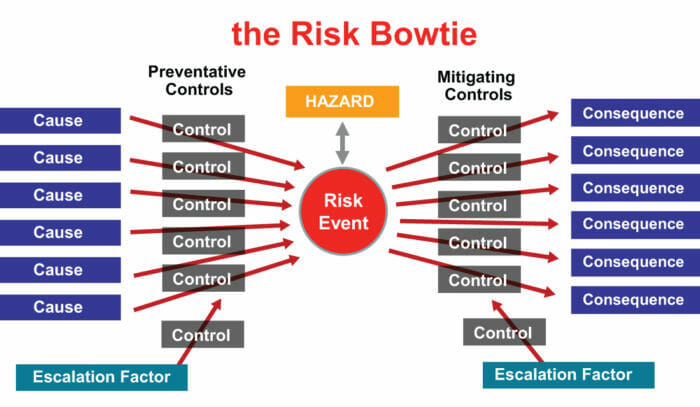Organizations live with hazards and risks as a part of doing business. The challenge is maintaining control over the causes and consequences.
One highly-efficient and widely-used method of risk assessment and incident prevention is known as the Bowtie. It originated with the oil and gas industry where accidents can have catastrophic effects. It spread to other sectors including business administration and health and safety.
In the centre of the bowtie diagram is the risk or hazard and the risk event arising from it. Operating heavy machinery, storing sensitive customer data and working with hazardous substances are all hazardous yet necessary activities for different businesses. Numerous accidents and unforeseen events can arise from these activities.

The purpose of the Bowtie is both accident prevention and minimization of the impact of an accident when it has occurred. On the left is a list of the causes of the event, and to the right is a list of consequences. Both of these polarities have “controls” — preventative controls (reducing the risk) and mitigating controls (lessening the impact) respectively.
The controls of the Bowtie have “escalation factors” which can impact the effectiveness of each control. These factors, themselves, have controls that pose an additional level of variation to possible accident scenarios.
A Risk Bowtie can get increasingly detailed depending on the complexity of the event it addresses. The advantage of the Bowtie is that, being purely visual and qualitative, it can be used and comprehended by a wide audience throughout an organization, from a CEO to a front-line worker. The Bowtie is a highly effective means of analyzing ways to prevent accidents and responding when they do happen.
———
The topic of this article is inspired by the curriculum for the Schulich ExecEd program Masters Certificate in Risk Management and Business Performance Leadership (Starts April 20, 2020). This program is a dynamic three-module Masters Certificate focusing on meeting business performance goals by effectively managing the risks your organization faces.














